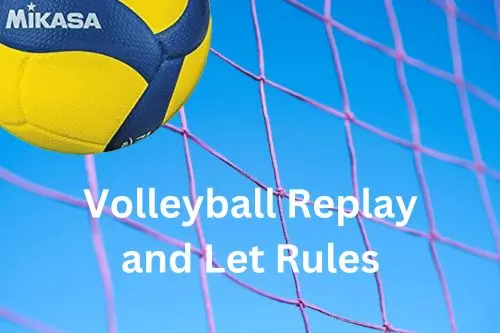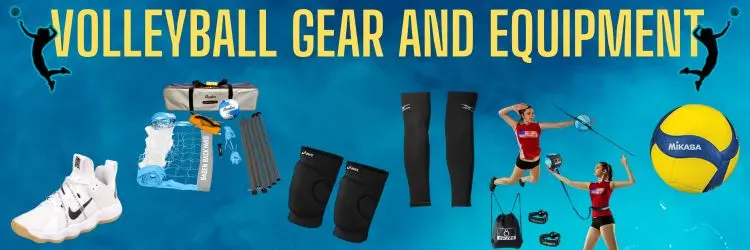Volleyball Replay and Let Rules

Volleyball Replay and Let Rules: Regulations Governing Fair Play
Volleyball is a sport rooted in fairness, speed and split second decisions. Despite the flow of the game, certain moments arise where actions are inconclusive or disrupted—these are often governed by replay and let rules.
These regulations help maintain the integrity of the match when unusual or unforeseen circumstances affect the outcome of a rally or serve. Understanding when and how these rules are applied is essential for players, coaches, referees and fans alike.
What Is a Replay in Volleyball?
A replay, also known as a “replay rally” or “replay point,” occurs when a rally is stopped and then repeated. This decision is made by the referee when a point cannot be fairly awarded to either team due to an external factor or uncertainty in the play. Instead of giving the point to one side, the referee instructs that the rally be replayed, meaning the teams return to their previous positions and the server serves again.
Common Situations That Lead to a Replay
Replays are relatively rare, but they serve as a necessary remedy in situations such as:
- Simultaneous Faults by Both Teams: If both teams commit a fault at exactly the same time (e.g. a net touch and a double hit), the rally is replayed because it’s unclear which team caused the fault first.
- External Interference: If an object or person not involved in the game interferes with play—such as a stray ball from another court or a fan entering the court—the referee may call a replay.
- Referee’s Inability to Make a Decision: Sometimes, the official may not clearly see whether a ball was in or out due to obstructed vision or poor angles. If assistant referees and line judges also did not see the action clearly, the point is replayed.
- Equipment Failure: If the net, antenna, or other equipment malfunctions or collapses mid-rally, a replay is typically ordered.
- Whistle Error or Premature Whistle: If the referee blows the whistle prematurely during a live rally, they may stop play and call for a replay.
- Double Fault on the Serve: If a let serve (more on this below) coincides with another irregularity—such as a player fault—the referee may decide to replay the point.
The Official Signal for a Replay
The referee signals a replay by raising both arms above the head and showing open palms, then mimicking a circular motion to indicate that the rally will be repeated. Players must return to their positions and the server repeats the serve without any point being awarded.
What Is a Let in Volleyball?
The term let refers primarily to the serve in volleyball. A let serve is when the served ball touches the net but still travels into the opponent’s court without touching any player or violating any other rule. The way this is handled varies slightly depending on the level of play and the governing ruleset.
Let Serve Rules in Indoor Volleyball
In indoor volleyball, governed by FIVB (Fédération Internationale de Volleyball), USA Volleyball, and most school or college leagues:
- Let serves are legal and playable.
If a serve touches the net but continues over and lands in bounds on the opponent’s side, it is considered live, and the rally continues. - Let serves do not warrant a replay.
As long as the ball does not violate any other rule (e.g. land out or hit the antenna), it remains in play.
This rule was not always the case. In the past, let serves used to be considered faults and would result in the loss of serve. However, to reduce unnecessary stoppages and keep the game moving, modern rules now allow let serves.
Let Serve Rules in Beach Volleyball
In beach volleyball, governed by the FIVB and regional bodies:
- The same rule applies: let serves are legal and do not require a replay unless the serve is accompanied by some fault or external interference.
- Because weather can affect the ball more significantly in beach volleyball, let serves can sometimes take unusual bounces, but the rule still allows play to continue as long as the serve lands in bounds.
Situations Where a Let or Replay Might Be Confused
Although let serves and replayed points are distinct, certain situations may cause confusion:
- Let Serve with External Interference
If a let serve goes over the net but is interrupted by an external factor (e.g. a whistle from another court), a replay may be called—not because of the let, but because of the interference. - Let Serve Touches the Antenna
If the ball hits the net but also contacts the antenna or goes outside the net, it is considered a fault—not a let—and the point goes to the receiving team. - Replay on a Faulty Whistle After Let Serve
If a referee mistakenly blows the whistle on a legal let serve, stopping play unnecessarily, they may call for a replay.
Can Replays Be Requested?
In general, players cannot request a replay unless they are captains and do so respectfully. The decision to grant a replay lies solely with the first referee. However, players can request clarification or a protest, especially at higher levels of play where video challenge systems exist.
In professional tournaments, coaches or team captains may use a challenge system to dispute certain calls. If the challenged decision is inconclusive due to unclear video evidence, the officials may order a replay rather than awarding the point.
Special Notes on Replay Rules in Youth and Amateur Leagues
In youth, high school, or amateur volleyball, officials may use replays slightly more often to accommodate inexperience or confusion. For instance, if a referee mistakenly stops play early due to a misinterpretation of the rules, they might replay the point to keep things fair.
Also, in recreational leagues, referees may be more lenient and use replays to avoid disputes, especially in situations involving crowding or unclear boundaries.
Summary of Key Points
| Scenario | Replay? | Let? | Point Awarded? |
|---|---|---|---|
| Simultaneous faults | Yes | No | No |
| External interference | Yes | No | No |
| Net-touched serve, lands in bounds | No | Yes | Rally continues |
| Net-touched serve, hits antenna | No | No | Fault (point) |
| Referee stops play accidentally | Yes | No | No |
| Equipment malfunction during rally | Yes | No | No |
Conclusion
Replay and let rules in volleyball ensure that the game remains fair and competitive even when unexpected situations arise. While replayed rallies help correct or neutralize irregularities, let serves allow the game to continue smoothly without penalizing unintentional net contact.
By understanding these rules, players and fans can better appreciate the flow of the game and the judgment calls made by referees. As the sport evolves, these rules will continue to support a balance of fairness, flow and excitement on the court.


